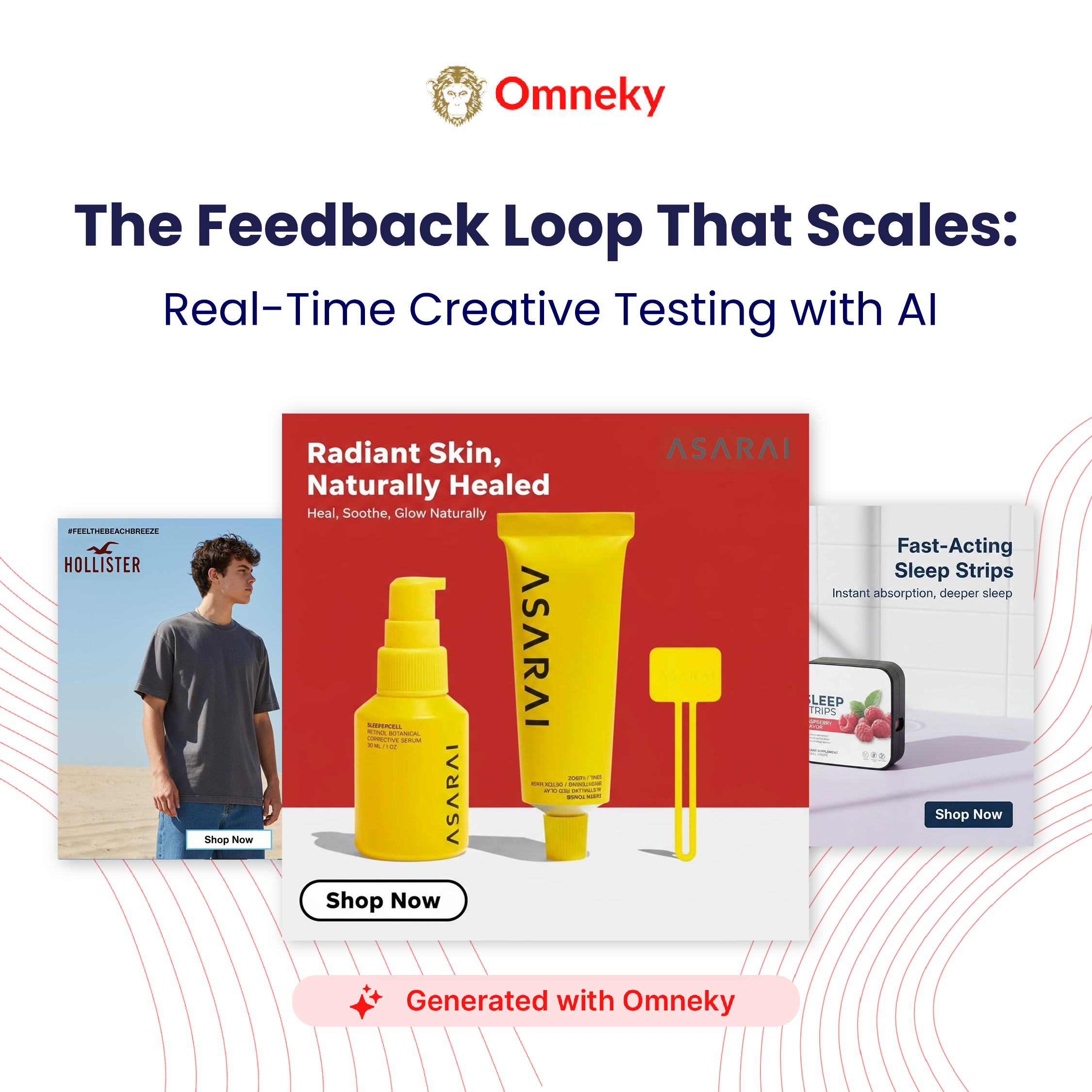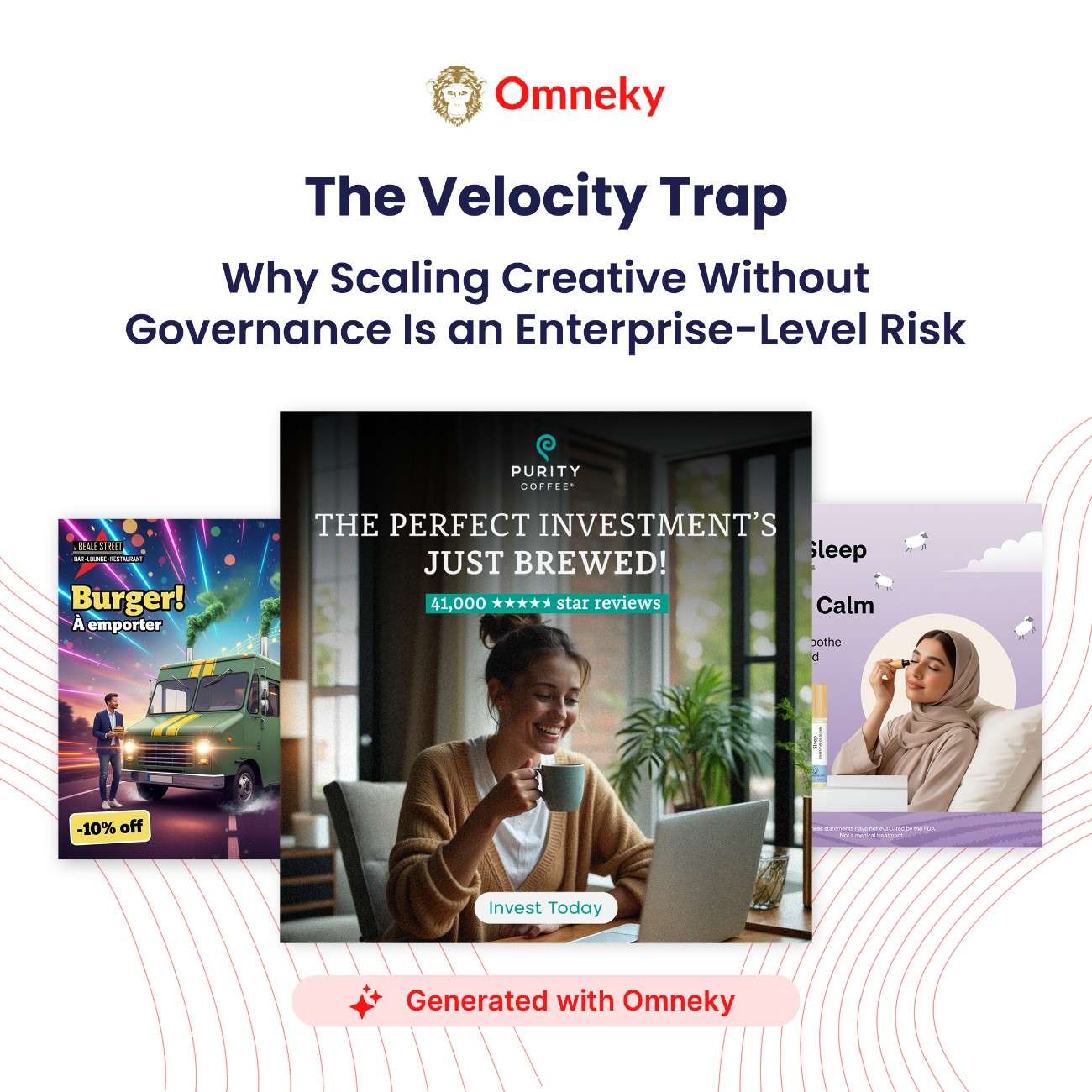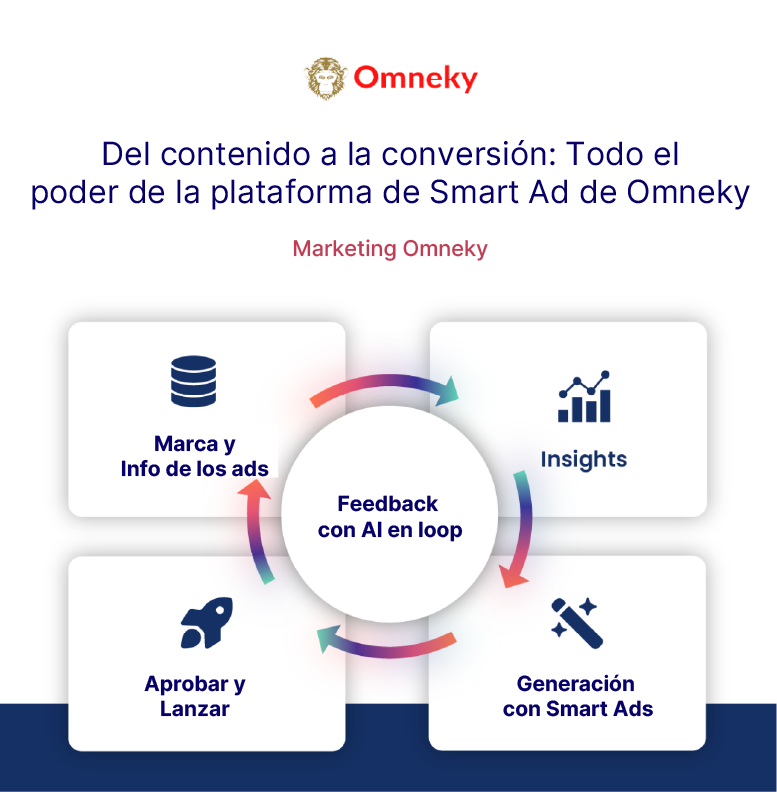The Feedback Loop That Scales: Real-Time Creative Testing with AI
For growing marketing teams, testing creative at scale can quickly become overwhelming. Launching multiple campaigns across Meta, Google, and TikTok often requires hours of manual tracking, analysis, and adjustments. Traditional A/B testing can be slow and resource-intensive, leaving teams reacting to results instead of proactively improving campaigns.

What if every ad helped you make the next one stronger?
For growing marketing teams, testing creative at scale can quickly become overwhelming. Launching multiple campaigns across Meta, Google, and TikTok often requires hours of manual tracking, analysis, and adjustments. Traditional A/B testing can be slow and resource-intensive, leaving teams reacting to results instead of proactively improving campaigns.
Omneky’s platform creates a continuous feedback loop that makes testing more efficient and results-driven. By analyzing performance data from multiple platforms, it identifies patterns in engagement, click-through rates, conversions, and audience behavior. Those insights can then be applied automatically to refine visuals, messaging, and storytelling in real time, turning each campaign into a learning opportunity for the next.
Why Real-Time Feedback Matters
Creative optimization is not just about launching ads and waiting for results. The most successful campaigns evolve with audience responses. A continuous feedback loop enables teams to:
- Spot trends and adapt messaging quickly
- Prioritize ad variations that resonate with specific segments
- Reduce wasted spend on underperforming creative
- Predict what will perform best before investing heavily in production
By turning every ad into a learning tool, teams can make informed decisions faster, improving ROI while reducing the manual burden of testing.
How AI Powers the Feedback Loop
AI amplifies the feedback loop by analyzing massive amounts of data across campaigns and platforms. It can automatically:
- Identify which visuals, headlines, and ad formats are performing best
- Recommend changes to copy, length, and sequencing
- Predict which creative elements will drive conversions for future campaigns
This makes creative testing proactive rather than reactive, helping marketing teams scale campaigns more efficiently while maintaining high performance standards.
Examples of Impact
- E-commerce brands have seen a 30% lift in conversions by automatically adjusting ad creative based on performance patterns.
- Mobile apps can tweak in-feed video lengths and messaging mid-campaign to improve installs and retention.
- Agencies managing multiple clients can generate optimized ad variations quickly without slowing down approval workflows.
Best Practices for Real-Time Creative Testing
- Use platform data strategically: Meta, Google, and TikTok each provide insights into user behavior—leverage this information to inform creative decisions.
- Test multiple variations: Generate different visuals, copy, and formats to see which resonate most with your audience.
- Iterate quickly: Don’t wait for the full campaign to finish; adjust ads mid-flight based on early performance indicators.
- Keep brand consistency: Ensure that changes maintain tone, style, and messaging across all variations.
- Analyze creative signals: Look beyond clicks to understand what resonates, including engagement patterns, retention, and emotional impact.
Conclusion
Real-time creative testing turns each campaign into a stepping stone for the next. By combining AI insights with performance data, marketing teams can move from reactive adjustments to predictive optimization. The result is faster learning, better-performing ads, and campaigns that scale efficiently without increasing team size.



